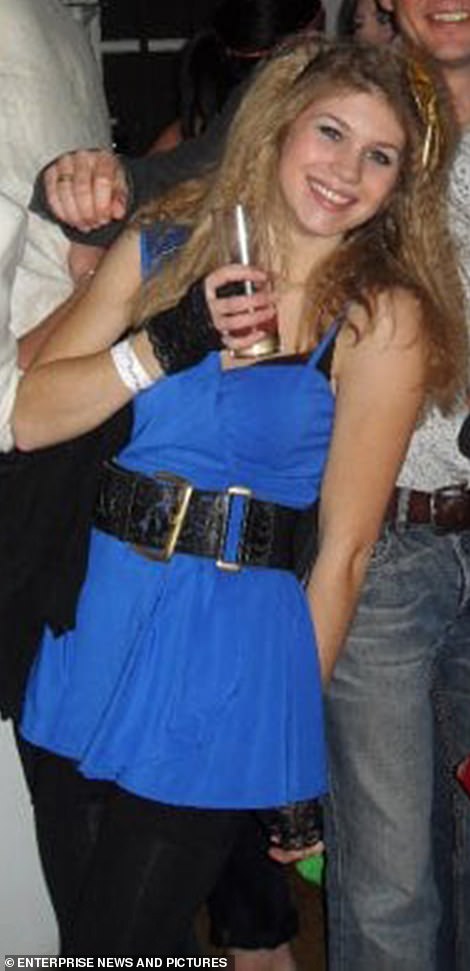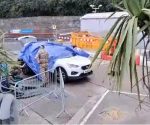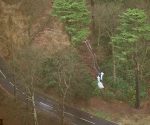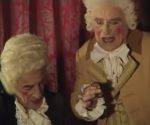A Sarah Everard mystery
There’s no point expecting a dog’s dinner to make any sense, and so that’s why there shouldn’t be any surprise at the incoherence coming, yesterday, from that bubble outside legal normality for bringing a psychological operation to fruition, the Old Bailey, whereby Wayne Couzens “pleaded guilty to kidnapping… [Sarah] Everard… on March 3”, and “also pleaded guilty to a second charge of rape between March 2 and 10”, but “was not asked to enter a plea to her murder between March 2 and 10.”
Reading this, one can’t help but think that if Couzens admitted to raping Everard – which is a new accusation† – the exact date of the incident would be known so that it could feature in the official charge. As for the murder; given what is already known, a best guess is that a charge was not put to Couzens because, from the evidence available to it, the Crown Prosecution Service cannot establish how deliberate killing had been committed, and this will presumably have something to do with the state of the body, which could not elicit a positive cause of death judgment from a coroner the first and only time it was scrutinised – but more about this presently.
Presumably, with the plea hearing having to have been scheduled in the full expectation that Couzens would be confronted with a murder charge – the main event, after all (the whole brouhaha around Everard, as it extended into the wider anti-male agenda. had been established on the basis of a killing), that Couzens was not required to answer to one must have been a considerable failure in the scheme‡. However, not letting the theatrical opportunity slip away, the malfunction was seemingly compensated for with an extraordinary piece of unnecessary ad hoc:
The court heard that responsibility for the killing was admitted [by Couzens] but medical reports were awaited.
The word that the Mirror would actually want to use if it was concerned about reporting facts, and not an interpretation to condemn the suspect (which is the job it has to do), would be “death” instead of “killing” – but this actually matters little in terms of the incomprehensibility of what goes on here. The author issues a challenge to the reader: appreciate how this would be an act of wholly needless voluntarily self-incrimination, and at the same time have it retain any sense of being possible, let alone probable.
So, although the behaviour of the suspect is indeed a mystery relating to Sarah Everard, it is not the one that this article was originally intended to address – which would be a mystery that is concerned with the very foundation of the legend, and with the issue of the fundamental identity of Sarah Everard, and whether or not this is something that the public is being told any truth about.
That being said, there is never a better time to cover a new development than when it coincides with a moment of embarking on material with which it could be integrated, and to such a full wise extent, as will become apparent.
To begin by natural extension into territory already introduced, a coroner’s inquest into Everard’s death was opened and adjourned on the same day in March because an examination of the corpse could not determine a cause of death. The inquest was to resume after the trial, the cause of death was to emerge, hopefully, after examination of samples taken from the corpse, which would be released for burial.
That a post-mortem examination could not reveal cause of Everard’s death could be indicative of the great deal of decomposition, or other obliteration, that was suggested at the time of the discovery of the body by its having to be identified by dental records – which was an astonishing piece of information, given that the body was found on 10th March, and had gone missing on the 3rd.
For a long time there was no news, but last week corporate-media reported that a second post-mortem had decided that Everard had suffered from a “compression of the neck”. This posed an immediate problem in respect of clear understanding, in that the body had been released after the first examination, as can be seen in this Evening Standard reporting of the time:
“The body of Sarah has now been released to her family in order that a funeral can take place”, Senior Coroner Patricia Harding told the hearing at Kent County Hall, in Maidstone…
Ms Harding said: “As a result of that post-mortem examination, the pathologist has not given a medical cause of death but further examinations from samples taken during the course of that post-mortem are to take place, after which a pathologist will give a final conclusion, having taken into account all matters he needed to.”
She said she has also ordered a second, independent post-mortem on Ms Everard’s body.
Perhaps, then, the comprehension to be had is that the second post-mortem involved analysis of samples in conjunction with revisiting the notes of the first physical examination. There would have been no separate investigation of a physical corpse. And it’s quite likely that if the first examination found “compression of the neck”, but couldn’t find other signs to prove a deliberate strangulation, such as bruising on the skin, then there was enough doubt to separate the neck injury to a pre-death assault. The news yesterday regarding the failure to have Couzens answer to a murder charge indicates that this a fair appraisal, and that the doubt survives.
So, this raises the whole question as to whether or not the Crown can prosecute a murder in this case, especially if Couzens won’t be compelled into admitting to killing Everard. Of course, if Couzens ever admits to committing murder, then the question of whether “compression of the neck” indicates strangulation somewhat resolves itself, and a resumed coroner’s inquest can then record a verdict of unlawful death – thus the cart is put before the horse, and a supposed murder trial needn’t be handicapped by a fact-based pathologist’s report that couldn’t prove a murder had taken place.
Of course, at the root of this irony is the mystery of Everard appearing to have been too long dead to suit the narrative. If this is not satisfactorily addressed in the future of this case, then there would be no choice but to entertain the idea that Couzens’ incarceration, and treatment therein, has so demoralised him that by now he would admit to any crime suggested to him – except murder, of course, which indicates that in spite of everything, he clings to an idea that he would be incapable of committing it. Alternatively, Couzens would be playing along.
Inevitably, then, we arrive at the possibility of a different crime than the one of official narrative, and a conspiracy to cover up its real nature, and the perpetual problem with dealing with this sort of thing is that while one follows the evidence wherever it leads, normalcy bias is so strong in a public inculcated in it since birth, it never goes down well with people who don’t want to know a painful truth, and reflects badly on its discoverer. Nevertheless, next up is the all too related mystery of Everard’s missing friends and family.
According to the corporate-media, Everard’s family have been very closely involved in the whole journey of her disappearance, the effort to find her, and then the prosecution of the suspect arrested in connection with her death. In general, one particular uncle was often quoted in newspapers during the period when she was missing. But, as far as the author is aware, there is no film or photograph of this man, which is unusual in this day and age when the gutter corporate-media especially likes to show a face to its audience.
In general, there are no images of Everard’s family going about business that pertains to the case – and they are always apparently about this business. Instead, one can clearly notice how the corporate-media is employed in filling real space with family membership in its written accounts so that there is an appearance of presence. Yesterday, for instance, it was reported that the family was in the Old Bailey to see Couzens’s hearing – with no more detail than that. The most astonishing instances of this space-filling come in the form of an example from the Huddersfield Examiner, which did a piece titled, Heartbroken family of Sarah Everard still don’t know how she died, published during the long period before the “second post-mortem” reported its conclusion. It is an article which projects upon Everard’s relatives the general anticipation, to be had by all sorts of interested parties, of receiving knowledge: “The family of York woman Sarah Everard are still waiting for answers on how the 33-year-old died.” There is no further exploration of the family’s emotional vulnerability, as one might be led to expect there would be. Instead, what becomes clear is a ruse to fill real space with an idea of family that doesn’t necessarily have to not exist, but isn’t necessarily where corporate-media says it is.
Frankly, it’s not the invisibility of Everard’s family which is the big problem, even if it is unusual. The bottom line is, these people shouldn’t be denied their privacy just to prove a back-story. On the other hand, the insubstantial nature of two people essential to the establishment of the Everard legend, Rose Woollard and Josh Lowth, is a puzzle that is problematic.
Woollard is a university chum of Everard’s, and was the last person to see her alive after they met on March 3rd. It is through Woollard – and Woollard alone – who submitted all the information in one go in a conversation had with the BBC, never to be interviewed by anyone else again, that the circumstances of the events leading to Everard’s disappearance came to be known in the public sphere. This oddity was called the “Woollard conundrum” at FBEL, because Woollard knew everything when perhaps she shouldn’t have. For instance, she was the apparent source of the information regarding a phone call between Everard and Josh Lowth – Everard’s supposed boyfriend – which happened on Everard’s walk home on the night she was kidnapped. Josh Lowth, on the other hand, has seemingly never made any public comment about it. Indeed, Josh Lowth’s public profile in respect of the case – as far as it is reported in corporate-media – appears to be restricted to a famous Facebook message in relation to Everard’s missing person status that smacked of activism ahead of emotional connection, what with an #internationalwomensday tag placed ahead of a #FindingSarahEverard one, and featuring a personalised drawing obtained from children’s book illustrator, Charlie Macksey. Apart from this page, an image of which can be found embedded in any story of Everard’s disappearance one might care to look at, there appears to be no follow-up with Josh Lowth – no interviews by corporate-media, not with Lowth or with Woollard. This absence is reflected in there being only one image of someone said to be the Josh Lowth connected to this story to be found in an internet search, and none of anyone called Rose Woollard.
Very much related to this phenomenon is another oddity whereby not one of the people who wrote messages on a memorial page hosted by Durham University, the establishment where Everard read geography between 2005 and 2008, appears to have known her directly. There are only three entries from people who attended the university at the same time as did Everard, and only one that gives the impression that there might have been an indirect acquaintance: a fellow writes “some of her best friends played and coached [sport] alongside me”.
That being said, one entry on the page confirms an item in Everard’s curriculum vitae, to wit, she was in South America from January to July 2013. The contributor posted a photograph which shows herself – presumably – with someone who definitely looks like Sarah Everard. The very interesting thing about this item is how Everard comes across as an old hand looking after a new body:
Rio de Janeiro was the first stop on my 3-month solo trip around South America. I was understandably daunted when I arrived, unsure if I would make any friends. Thanks to the warmth and friendliness of people like Sarah I never felt lonely for a moment. And it’s down to the kindness and humanity of people like Sarah that I, a solo female traveller, was safe.
In Buenos Aires I was really keen to go to a tango show, but I struggled to find others who wanted to join me I was really grateful to Sarah that she agreed to come. It was a dream of mine to watch professional tango performers in Argentina and Sarah helped to make it happen.
The year of Everard’s South American sojourn (although we don’t know why she was there), could be a significant date because it is the same one when a Sarah Everard, (who is most likely the same Sarah R Everard who was listed living in York with her parents until 2010 in 192.com’s electoral roll database) stops being recorded (at the same source) as living in Stockwell, London, (with three housemates, not family), and there after cannot be identified at any London address with any certainty at all.
In support of the idea of a period of consequence is the discovery of a little-used photograph of Everard, which was noticed in a corner of the internet, on a United States news site (The Washington Time – see the article here). On the one occasion when the author saw this image used in the UK, it had been cut in half so that the bottom was not visible – which means that the really interesting information had been cropped off. The weird thing about this image is that it appears to live in a photo-cache belonging to the Daily Mail, but this organisation never uses it. In fact, no one except the Washington Time has used it in its full form.
 As the reader can see from the copy reproduced here, the image is copyrighted by Enterprise News and Pictures. However, if one searches for Enterprise News and Pictures, and looks at the single pertinent result that is returned, then one discovers a Companies House entry that tells of how Enterprise News and Pictures Limited, which is in the business of “portrait photographic activities”, was dissolved on 22nd July, 2014.
As the reader can see from the copy reproduced here, the image is copyrighted by Enterprise News and Pictures. However, if one searches for Enterprise News and Pictures, and looks at the single pertinent result that is returned, then one discovers a Companies House entry that tells of how Enterprise News and Pictures Limited, which is in the business of “portrait photographic activities”, was dissolved on 22nd July, 2014.
The mystery, then, is why is this picture of Sarah Everard existing in what is presumably a photojournalists portfolio at some time before July 2014? To be lenient, one could say that Everard is not really the subject of the original composition – but in that case, how is it that she would be related to a newsworthy event or character (because so much of this sort of stuff must be generated by paparazzi types) before July 2014 so that this image could find its way into a stock of copyrighted photos? If it’s the case that a quite random photo came to be in the Daily Mail’s possession after July 2014 – perhaps as part of a purchase of a portfolio – how is it that someone would know how to locate it, using a keyword in a search index, at the time when Sarah Everard would became newsworthy, so as to publish it to the internet? Why would Everard already be connected to a search term or a context for the image?
The only explanation that the author can come up with is that he has made a simple mistake, and the Enterprise News and Pictures that copyrighted the image is another company of the same name – one that didn’t go out of business in 2014, and which received the image after the Everard incident took place. Is the reader buying it?
† It is entirely likely that we are going to hear that police obtained Couzens’ DNA from the badly decomposed body, somehow, whether it be a true fact or not; note, the history of these high profile cases is strewn with occasions of cross-contamination from police bungling – and that’s assuming that convictions on DNA evidence are always safe, which is not the case. Moreover, we might expect the situation to have developed whereby it was put to Couzens that police were in possession of proof of rape, and had enough to convict him – generally, in Britain’s kangaroo justice system, and especially specifically in the theatre that is the Old Bailey. It would be extremely telling if this situation arrived because police thought that proving murder might be beyond them, but that it would help them enormously to have Couzens’ on trial already tainted with the crime of rape.
‡ The official excuse is that medical reports into Couzens’ mental health at the time of the incident are pending.


















